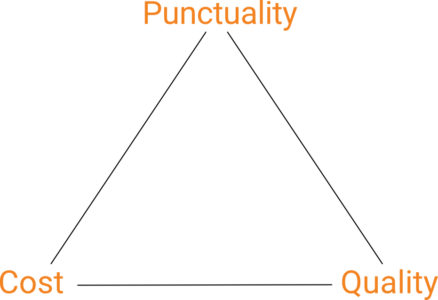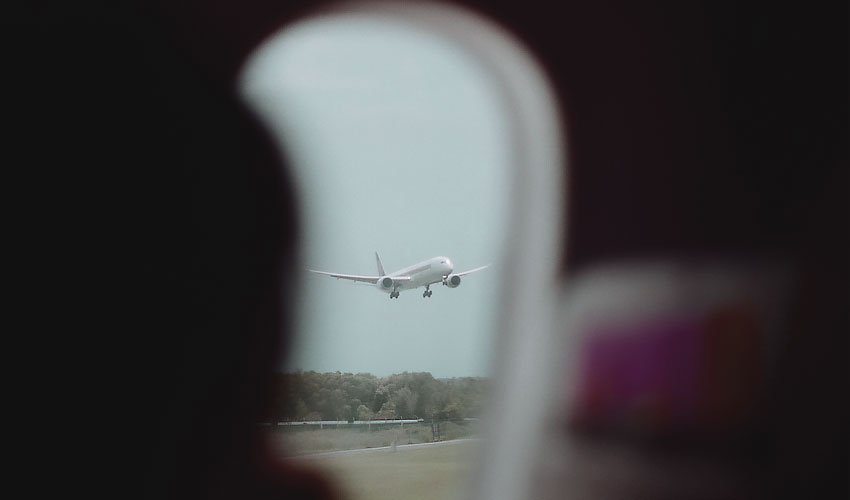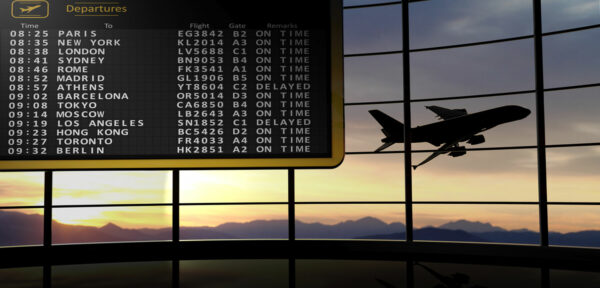Managing OTP in aviation is a complex matter. This is a truism we often hear. Ultimately, the complexity of the daily flight operations involves coordinating many parallel processes, compensating for disruptions, and anticipating them as early as the planning stage. This creates conflicting goals and different interests of various stakeholders, all under the umbrella of economic constraints. If massive external shocks such as the pandemic are added on top of that, the situation becomes even worse. Sometimes these extraordinary disruptions can lead to the withdrawal of some market participants. Analysts speak of a market shakeout.
However, excluding dramatic external shocks, it is much more common to tackle the unplanned smaller deviations in the daily business. Bad weather, delays from other airlines, short-term sick staff absences, technical problems, and many other issues mean that practically no day goes as planned. Overcoming these challenges requires short-term rescheduling or re-allocation of tasks, staff, and resources. The key for success lies in three parameters which comprise the so-called OTP Tringle.
The OTP Triangle – The Formula for Success
In the context of airline operations, nothing holds a greater sway over the entire organization than on-time performance. Sustaining a good OTP in aviation requires many people and functions to perform well together over time. And when challenges arise, as they invariably do, low OTP can exact a toll on costs, profits, customer satisfaction, and the morale of the employees involved.
Perhaps you think of reaching good performance is like being in the Grand Prix. You have to race against time to reach the goal. Aircraft turnaround periods have become shorter, while the number of processes needed to keep aircraft flying has increased at the same time. Breaking down all these processes helps stakeholders assess how performance was at each step in order to improve it.
Over the past decades, three key factors have established themselves as pivotal points to achieve OTP. A large number of operational decisions can be made on the basis of considering and balancing them. In total, they can be used as a rule of thumb.

Finding the right balance between these three parameters is a complex task which needs to be carried out thousands of times every day.
1. Punctuality
For many end customers, punctuality is the first thing that comes to mind when talking about good performance. For airlines, there are also many good reasons to give punctuality top priority.
Take a normal flight, as an example. If the flight departs and arrives on time, the airline can be regarded as a reliable and punctual service provider. If that’s not the case, it quickly has a negative impact on the airline’s brand. The same applies to airports and ground handling service providers whose customers are airlines.
An even more solid argument is that of the sheer costs. Delays mean almost instant costs that increase exponentially with increased delays. There are only limited possibilities for an aircraft to make up a delay over the next few flights. A few examples include a special permit from air traffic controller to take a shortened flight route, the allocation of an earlier slot before departure, or simply to fly faster. But the most efficient way is not to let delays even happen, provided that they can be managed.
2. Cost
A penny saved is a penny earned. The cost is another factor that influences the entire daily operation heavily. Over the years, saving potential across all areas has been identified and programs for cost cutting and cost efficiency have been rolled out. By now, we have become used to self-service check-in, the extra luggage fee, no free beverages, and no in-flight entertainment. With the pandemic breakout, as air traffic deeply felt, the urgency for a cost-reduction strategy became more visible. Airlines had to be extremely creative to generate every little piece of additional revenue they could get.
Today as passenger numbers boom, the competition between classical and budget carriers is fiercer than ever. According to the flight booking platform Hopper, the average airfare from the US to European destinations is up by 32% compared to 2022. Factors contributing to sky-high ticket prices include rising inflation, jet fuel prices, not enough aircraft, and the persistent staff shortage issue present in different degrees in different regions.
Striving to offer tickets at lower prices, budget airlines try to identify and eliminate all unnecessary spending. At the same time, they need to ensure that their punctuality is not harmed. To do so, they avoid all cost-driving complexities that are part of the business model of classical carriers. They don’t work with hubs and connections and instead, only do their point-to-point flights to keep their business and processes simple.
3. Quality
What does quality ultimately have to do with achieving OTP in aviation? We can consider quality from two perspectives. The first one is the passenger expectation. If the flight is punctual, the meal is hot and tasty, the seat is comfortable, and the cabin crew is friendly and professional, service quality is achieved. If you pull the scope a little wider, you have the entire passenger journey to consider. Did you have to stand in line at the check-in, or have a self-service check-in? Did it all go smoothly at the safety area? Was the boarding timely and well-structured? All fine with the baggage?
Often, a quality promise for us is related to the image of the brand. In the case of airlines, end users often expect more from long-serving and worldwide-operating traditional carriers. The higher they are ranked in specific annually published quality rankings, the higher the expectations. Quality undoubtedly plays an essential role for airlines. This is not in the sense of a hard-to-measure, highly subjective variable, but in the sense of the nature of a product.
The second way to define it is to check if these specific quality standards are met. Each airline determines how long the turnaround times are, which catering concept is used, to what extent connecting flights are to be reached, and so on.

Which factor of the OTP Triangle is the most important?
All three key factors in the OTP Triangle are related and interdependent. If one parameter changes, the others inevitably change as well. This is comparable to the principle of communicating tubes, as we learned in physics education. If the catering is reduced, the costs decrease. Or, if the rate of unpunctual flights increases, the costs increase as well. If lower Service Level Agreements (SLAs) are agreed upon for baggage and punctuality, then the perceived quality of service for the passenger often decreases. In turn, if more money is invested, which means increasing costs, then quality or punctuality will also improve.
It depends heavily on the strategic direction of the airline as to which factor will be its primary focus. For example, it is common knowledge that low-cost airlines place the strongest focus on low costs and accept lower service quality in turn. The catering is minimal or only available as buy-on-board items. Strict upper weight limits for luggage or parking positions far outside the terminal also mean a loss in quality, but this is usually accepted by the passengers without a complaint. On the other hand, a classic carrier offers a usually higher ticket price, but a better service infrastructure as well as the coordination of connecting flights.
Obviously, the decision-making processes for a better OTP in aviation are made in a complex environment with a lot of variables to consider and balance. It’s almost a miracle that the basic situation can be visualized with such a simple graphic. Time to make the right decisions!
>> How is the focus on these factors in your organization? Let us know in the comments below.





0 comments on “Simple Picture, Complex Matter: The OTP Triangle”